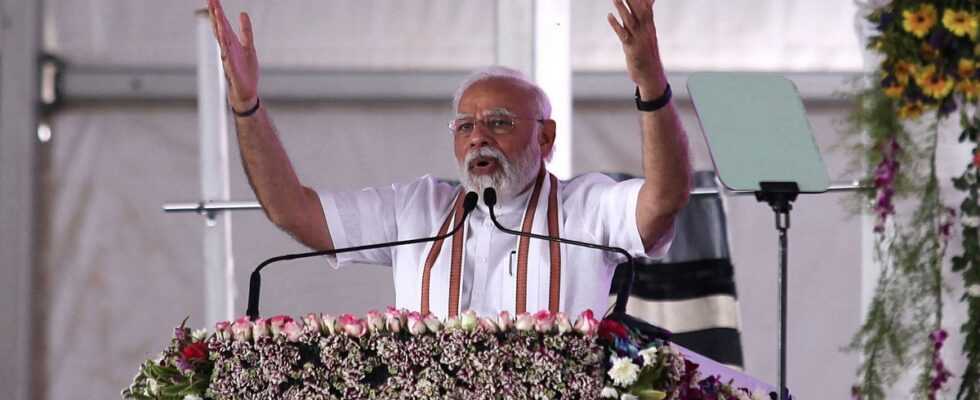Indian Prime Minister Narendra Modi pledged peace and development on Sunday during his first public visit to Jammu and Kashmir since the 2019 revoking of the Muslim-majority territory’s partial autonomy and the start of a harsh crackdown .
Read alsoIn India, the aura of Narendra Modi tarnished by the Covid-19 crisis
Narendra Modi inaugurated a tunnel, visited a road under construction and a hydroelectric project before delivering a speech to tens of thousands of supporters in the village of Palli, located in Jammu, the southern part of Kashmir where Hindus are the majority .
He said Kashmir has seen unprecedented development since 2019, when its Hindu nationalist government stripped the region of partial autonomy, arrested thousands of people and isolated the territory for almost six months by shutting down internet and telephones. .
“I want to tell the young people of the valley that they will not have to face the difficulties and the sorrows that their parents and grandparents had to facehe said, referring to the Muslim-majority Kashmir Valley, the epicenter of opposition to Indian rule of the territory.
The area had been placed on red alert ahead of his visit. With more than half a million soldiers and paramilitaries deployed on the border with Pakistan, this region is already the most militarized in the country.
Kashmir is divided between India and Pakistan, which have claimed all of this Himalayan territory since their independence in 1947.
Since an uprising in 1989, the Indian-administered part has seen violence that has claimed tens of thousands of lives. Delhi accuses Pakistan of supporting the separatists, which Islamabad denies.
“Democracy Day”
Since 2019, India’s prime minister has regularly visited troops stationed along the border with Pakistan, including to celebrate Hindu religious holidays.
But the trip to Palli marked Narendra Modi’s first official appearance in the territory. He spoke at a ceremony organized by his party Bharatiya Janata Party (BJP) for the “Panchayati Rajday of celebration of local democracy, although Kashmir has been without an elected regional government since 2018.
The head of the regional government, who governed in coalition with the BJP, was imprisoned in 2019 only to be released more than a year later.
The Indian government argues that the 2019 decision was aimed at fostering peace and attracting investment.
But the result is a rigid security apparatus that stifles all civic life and makes protest virtually impossible.
About 2,300 people, mostly political opponents and activists, have been imprisoned under vague anti-terrorism laws denounced by human rights NGOs.
By revoking the autonomy, the government has, for the first time, opened up to all Indians land ownership, jobs and seats in higher education, previously reserved for permanent residents of Kashmir. Many experts and observers saw in it the beginnings of a “settler colonialism“.
Police say violence has decreased in Kashmir since 2019. However, during this period, nearly 1,000 people, soldiers, activists, civilians, have been killed. And young people are still enlisting in rebel groups that have been fighting against Indian authority for three decades.
Read alsoIndia: seven dead in clashes in Kashmir
On Friday, insurgents attacked with grenades a security force bus in Sunjwan, in the district neighboring the one Narendra Modi visited. An Indian officer and two suspected rebels were killed in the ensuing firefight and nine members of the security forces were injured.
SEE ALSO – India: the country launches a “digital rupee” and will impose a 30% tax on cryptocurrencies
